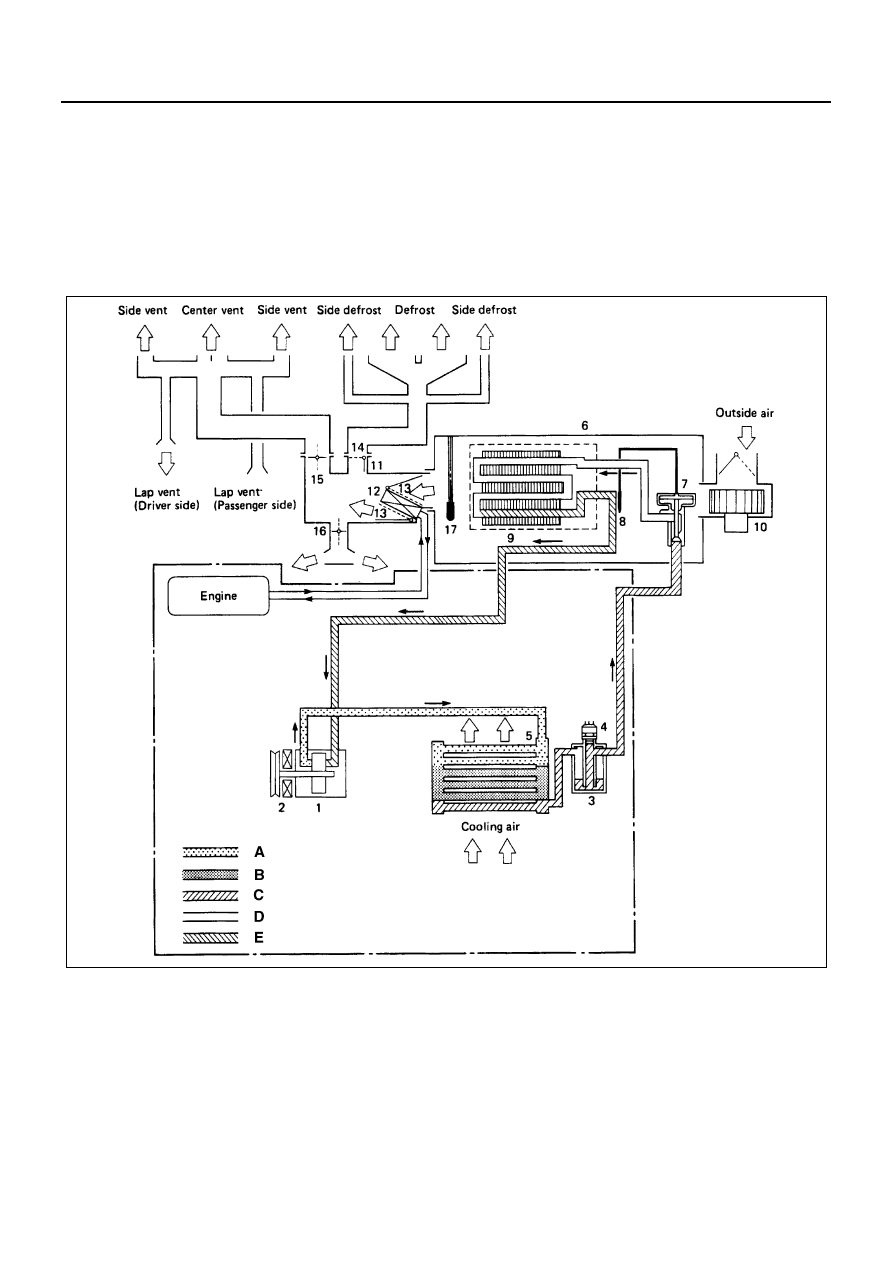Isuzu N-Series. Manual - part 58

1B-2 AIR CONDITIONING
GENERAL DESCRIPTION
Caution:
This Vehicle is equipped with Refrigerant-134a (R-134a) air conditioning system.
R-134a and A-12 systems require different types of lubricating oil. Components designed solely for use with one re-
frigerant and oil type must never be interchanged with components designed solely for use with another refrigerant
and oil type. Refer to “ON-VEHICLE SERVICE” for Precautions for R-134a Air Conditioning system in this section.
Air Conditioning Refrigerant Cycle Construction
N1A0045E